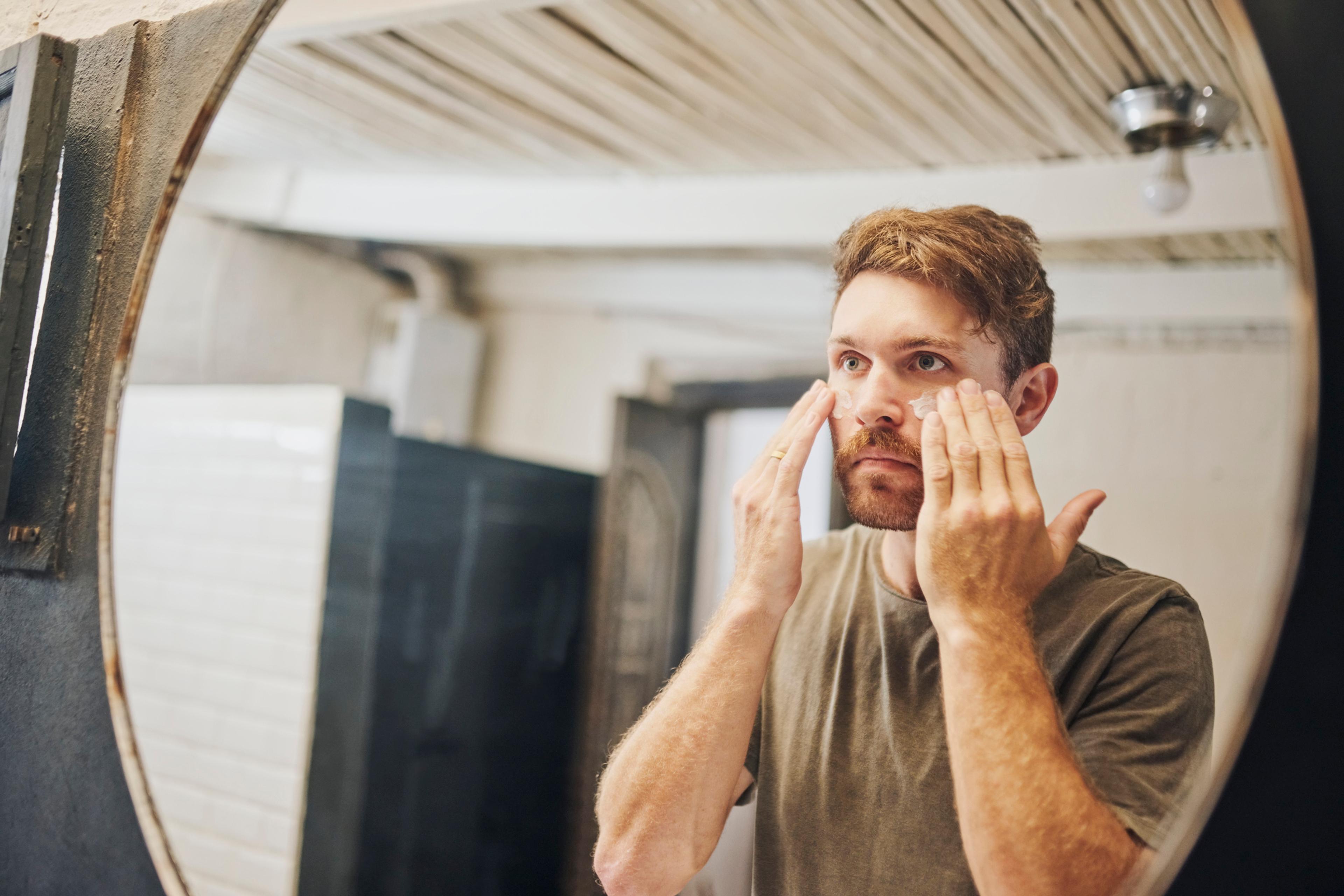What’s the Right Sunscreen for My Skin?

Mike Merucci
| 4 min read
Mike Merucci is a corporate communications intern at...

Sunscreen is a must-have during the summer, and there are so many options to choose from. Selecting the right sunscreen for you may not always be obvious. So, how do you know what to look for?
Before you buy sunscreen, you’ll want to check for a few things. Some sunscreens are safer and better at protecting skin than others, and you can determine which to purchase with a quick look at the bottle.
First, it’s important to know the two sunscreen types andwhat they do to keep your skin safe.
Mineral vs. chemical sunscreen
Mineral sunscreen, also called physical sunscreen, acts a barrier between your skin and the sun. It sits on top of skin and blocks UV light, preventing that light from touching applied areas.
Though mineral sunscreen provides great protection, it can be difficult to rub in and needs to be applied more frequently than chemical sunscreen. For those with sensitive skin, mineral sunscreen may be the preferred option, as chemical sunscreen may cause skin irritation.
Chemical sunscreen allows UV light to penetrate skin, but the chemicals in the sunscreen convert that UV light into heat, which is then scattered away from the skin.
According to the U.S. Food and Drug Administration (FDA), there is evidence that some active ingredients in chemical sunscreen may enter the body after being absorbed through skin. Studies are being done to determine if this absorption “may result in unintended, chronic, systemic exposure to sunscreen active ingredients.”
Active ingredients in sunscreen, and which to be wary of
In 2022, the FDA proposed GRASE (Generally Recognized As Safe and Effective) status for sunscreens whose primary active ingredients were zinc oxide and titanium dioxide – that being most mineral sunscreens.
Sunscreens containing the following ingredients were given not GRASE status “because of data showing safety issues” and should be avoided.
- Aminobenzoic acid
- Trolamine salicylate
Non-GRASE status was also given to sunscreens containing the following ingredients “because of inadequate data to support a safety finding.” These ingredients aren’t deemed harmful by the FDA, but additional information about their effects on humans is being evaluated:
- Cinoxate
- Dioxybenzone
- Ensulizole
- Homosalate
- Meradimate
- Octinoxate
- Octisalate
- Octocrylene
- Padimate O
- Sulisobenzone
- Oxybenzone
- Avobenzone
Which SPF should I look for?
According to UCLA Health, “The higher the SPF number, the longer the protection should last.” As an example, they state: “If you wear sunscreen with SPF 30, it should take you 30 times longer to burn than if you weren’t wearing any sunscreen.” In addition to this longer timeframe, higher SPF also cuts down on the total percentage of UV rays you are exposed to.
There are two types of UV rays: UVA and UVB, both of which can cause skin damage and skin cancer. SPF only describes how much a sunscreen protects you from UVB rays, which cause sunburn. For protection from both UVA and UVB rays, make sure you buy sunscreen with a “broad spectrum” label on it.
Stick, spray or lotion?
Stick sunscreen is a great option for the face and ears, but not so much for the rest of the body. It’s best to apply stick multiple times over an area to ensure that you’ll have optimal protection.
Spray sunscreen is quick and easy to apply, but it isn’t always easy to tell if you have the right amount on. It’s best to have someone spray it on you until your skin is shiny. After that, it’s a good idea to rub it in.
Spray sunscreen can cause damage to lungs when sprayed on or near the face, so be careful with usage. It’s best to not use spray sunscreen with children, and instead use lotion.
Lotion sunscreen is versatile and can be used all over the body. The American Academy of Dermatology recommends using one ounce of sunscreen — the equivalent of a shot glass — to properly cover exposed areas.
There are many other sunscreen types, such as oils, gels, butters and pastes. Regardless of which sunscreen you use, make sure it says “water resistant” on the bottle –ideally for 40 minutes or more. Though sunscreens are not waterproof, a water-resistant sunscreen will take longer to be washed away.
Other protective measures to take
Sunscreen isn’t perfect. When you’re out in the sun for an extended period, you should seek shade, wear sunglasses and dress in protective clothing.
If you have questions about protecting your skin from the sun or notice any abnormal sun damage on your skin, speak to your dermatologist or primary care provider.
Stay safe this summer with more guidance from MIBlues:
Photo credit: Getty Images





